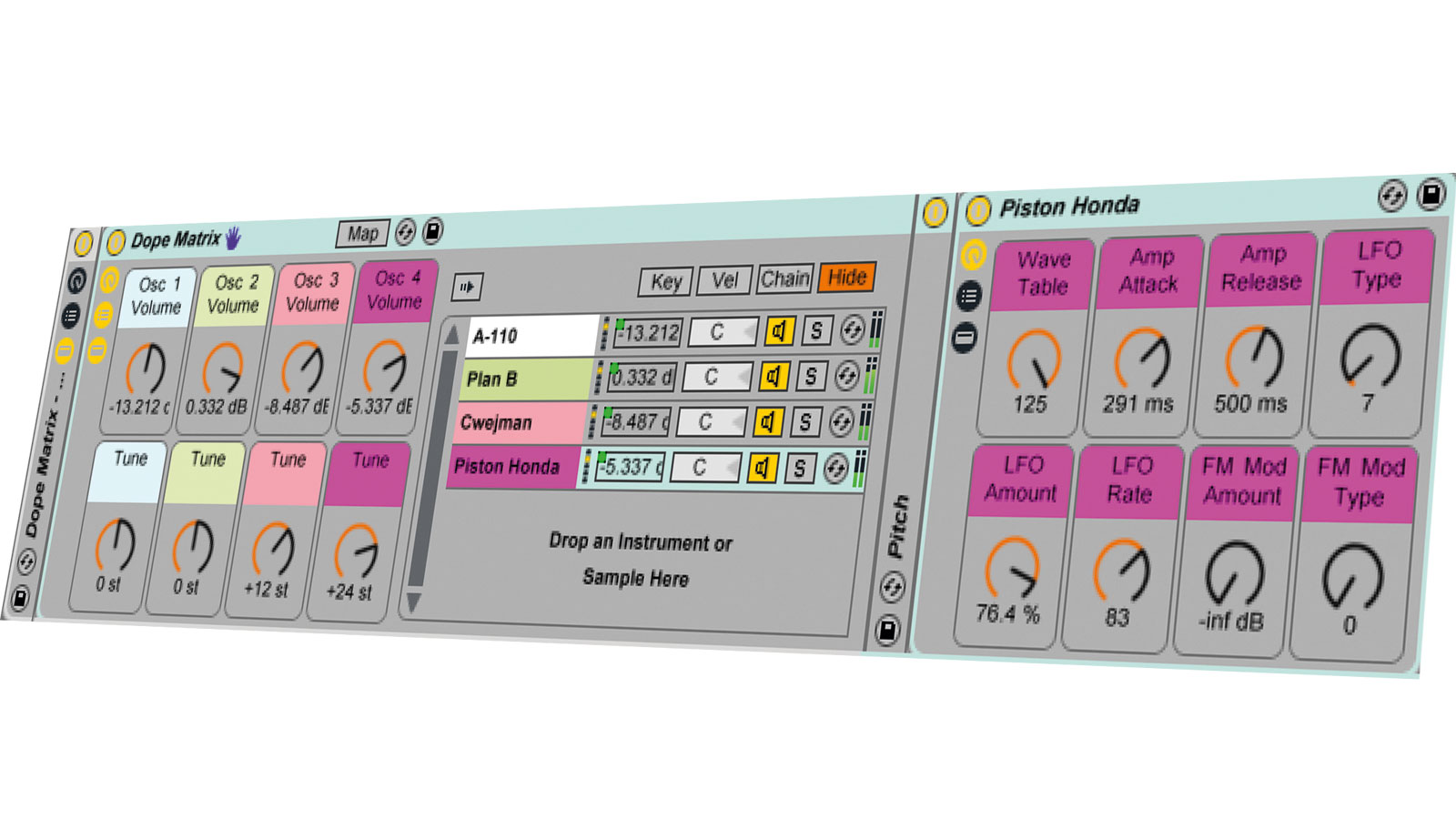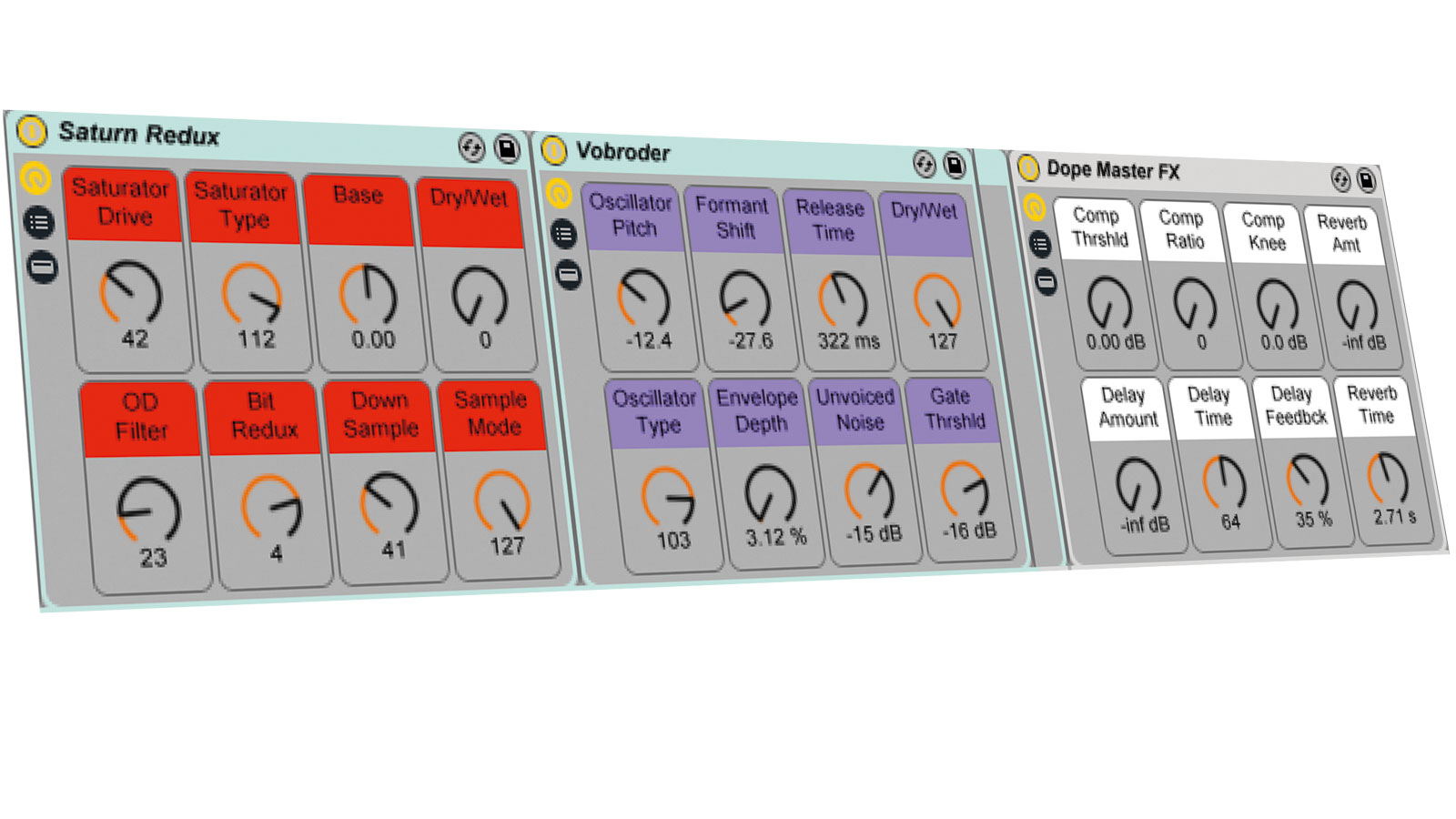MusicRadar Verdict
By chasing the Push modular vibe, Sonic Faction have built a synth that succeeds in its own right.
Pros
- +
The Max For Live step sequencer can be used with other instruments and effects as well. Extensive integration with Ableton's Push, APC40 and Launchpad. Well-furnished with plenty of instrument presets in all popular categories.
Cons
- -
Doesn't substitute for the true vibe of hardware synths.
MusicRadar's got your back

Sonic Faction Dope Matrix

Saturn Redux
The latest in Sonic Faction's line of Ableton Live-only instruments is Dope Matrix, a live pack containing simpler racks, presets, live clips, and a Max For Live step sequencer, combining to give you something of the sound and vibe of using 500 series rack-style modular synths, sampling real-world hardware oscillators from The Harvestman, Doepfer, Plan B, and Cwejman.
"What makes it even more interesting is the level of integration with Ableton's Push, Novation's Launchpad, and Akai's APC40"
What makes it even more interesting is the level of integration with Live's associated hardware, namely Ableton's Push, Novation's Launchpad, and Akai's APC40.
Dope Matrix installs like any typical Live pack - then you're ready to browse through the 100-plus presets, which are helpfully tagged with long, descriptive names and categorised by type: bass, lead, pad, ambient, and so on.
Step it up
The Pulsar pad and the Revenge bass are good examples of what Dope Matrix is about. Each loads with all four oscillators in individual chains, so you can mix their volume levels, and with some of the custom audio effect modules such as Mod Squad already in line. Everything's neatly colour coded, labelled, and ready to run from your hardware. The most interesting sounds are definitely achieved by combining the different modules.
"The most interesting sounds are definitely achieved by combining the different modules"
Things really get going, however, when you pair the step sequencer with a supported hardware device. We were using Push - the sequencer uses Push's grid to enter notes, accents, chords, and to select scales - all of which are accessed from the top row of buttons. It has four 'lanes' of modulation where you can sequence up to four instrument or effect device parameters simultaneously.
The sequencer, being a typical Max For Live device, can also be applied to other Live devices, and third party plug-ins, not just the Sonic Faction ones, which makes it more versatile and more likely to be used!
Live and kicking
Dope Matrix, being basically a bunch of tarted-up Live devices, doesn't substitute for the true vibe of hardware synths, but with the right controller connected, and the sequencer running, it's in the neighbourhood.
Want all the hottest music and gear news, reviews, deals, features and more, direct to your inbox? Sign up here.
This is a great example of how versatile and powerful Push can be. The presets are better than average, and easy to customise - the whole thing screams 'take me to your next gig'. You don't have to be a synth nerd, either; you can take Dope Matrix for what it is, an enjoyable, simple, and affordable, expansion to your Live Library.

Martin Delaney was one of the UK’s first Ableton Certified Trainers. He’s taught Ableton Live (and Logic Pro) to every type of student, ranging from school kids to psychiatric patients to DJs and composers. In 2004 he designed the Kenton Killamix Mini MIDI controller, which has been used by Underworld, Carl Craig, and others. He’s written four books and many magazine reviews, tutorials, and interviews, on the subject of music technology. Martin has his own ambient music project, and plays bass for The Witch Of Brussels.